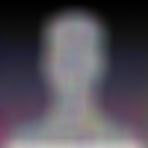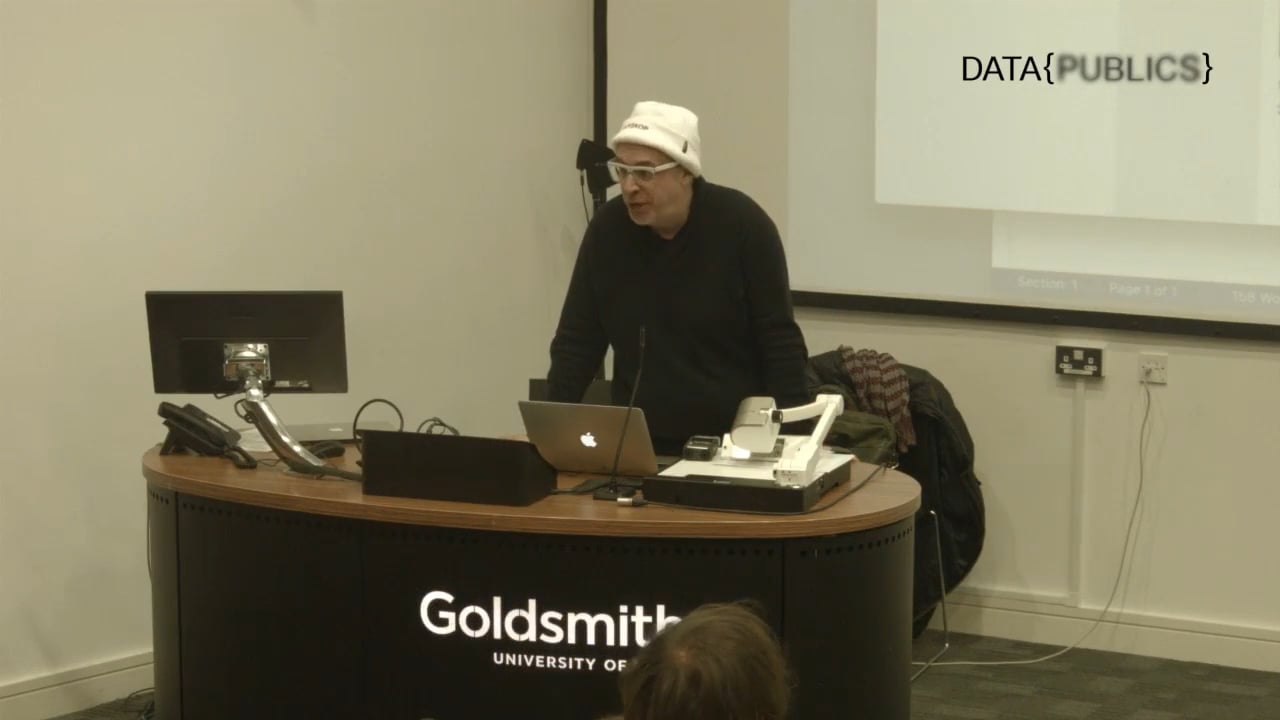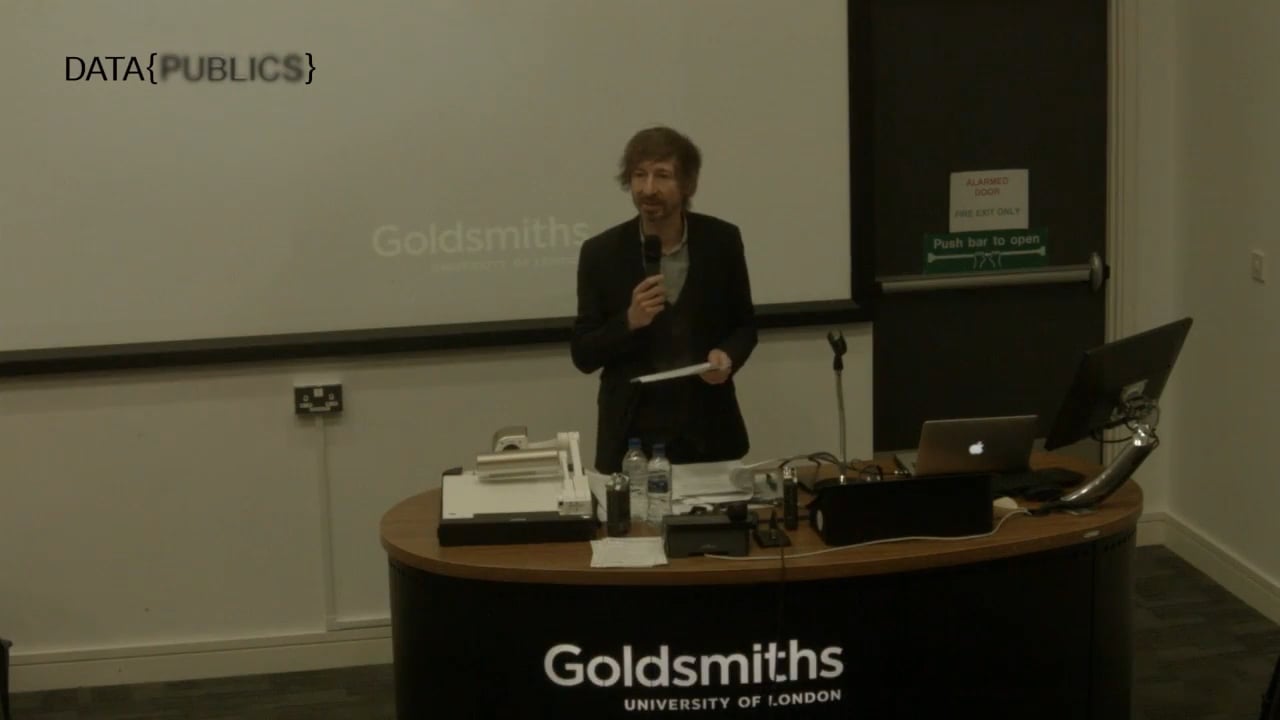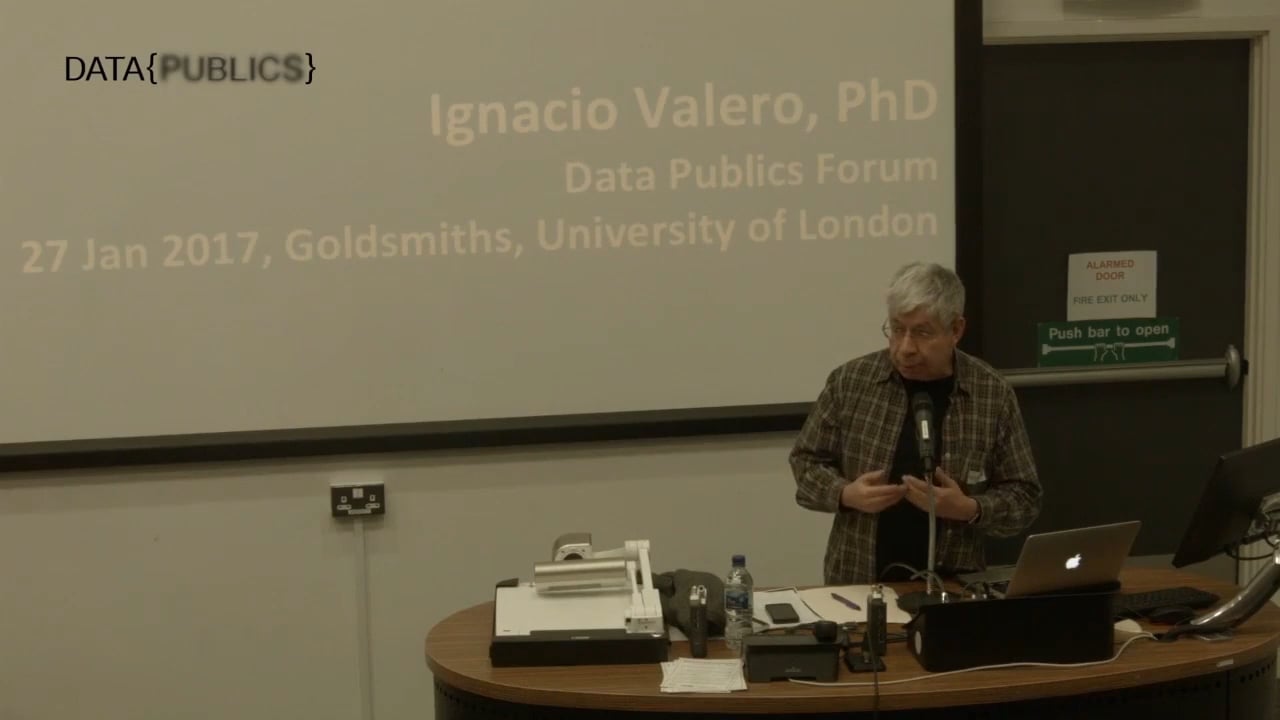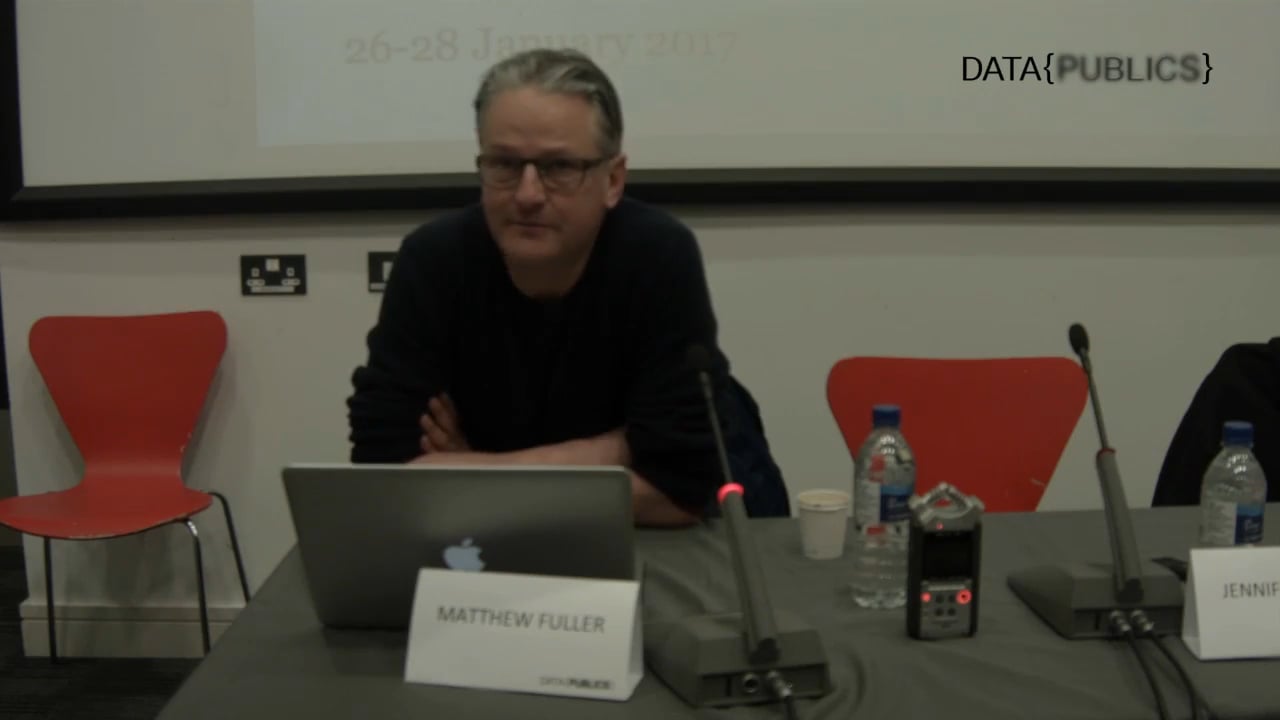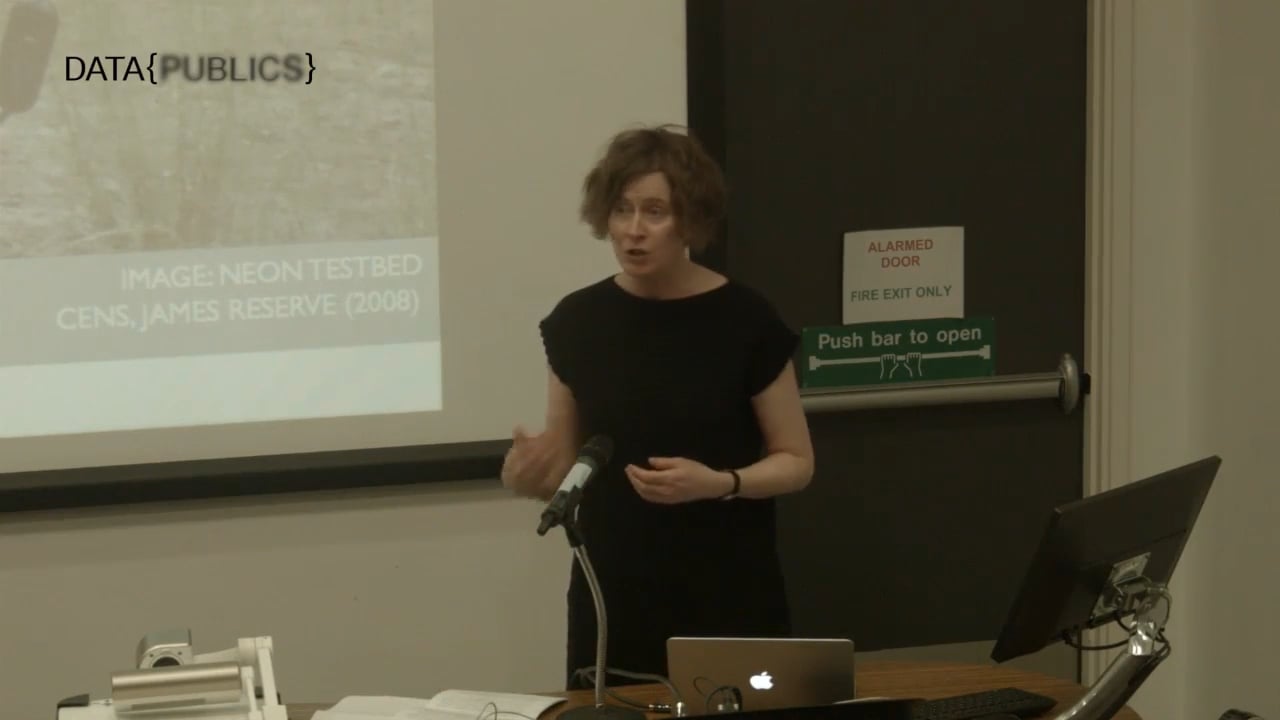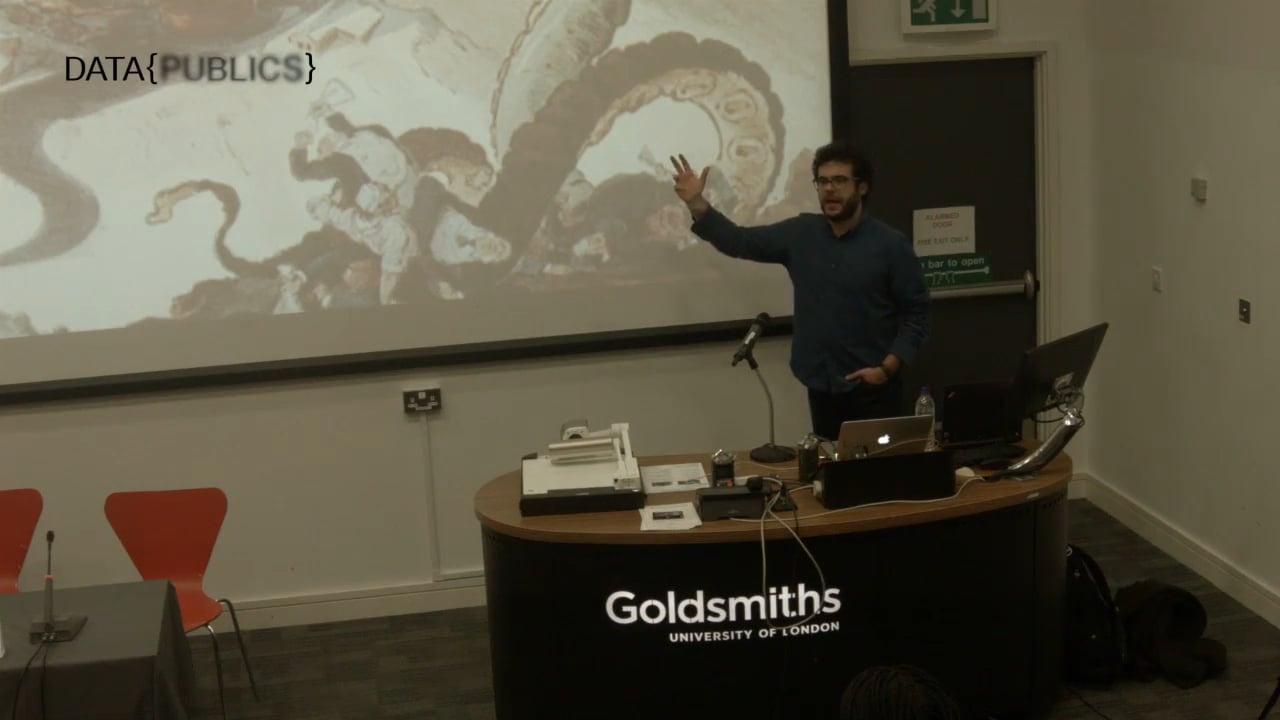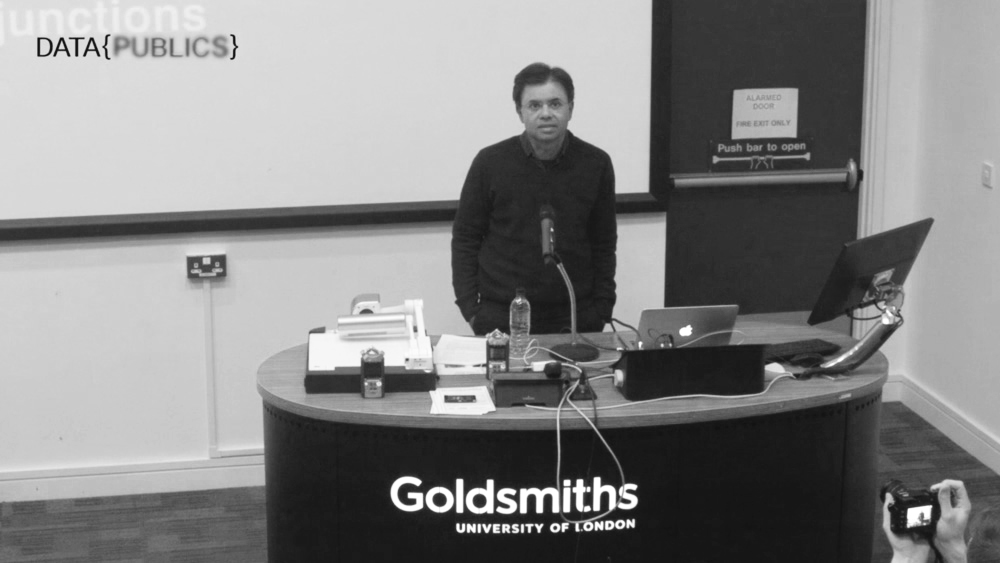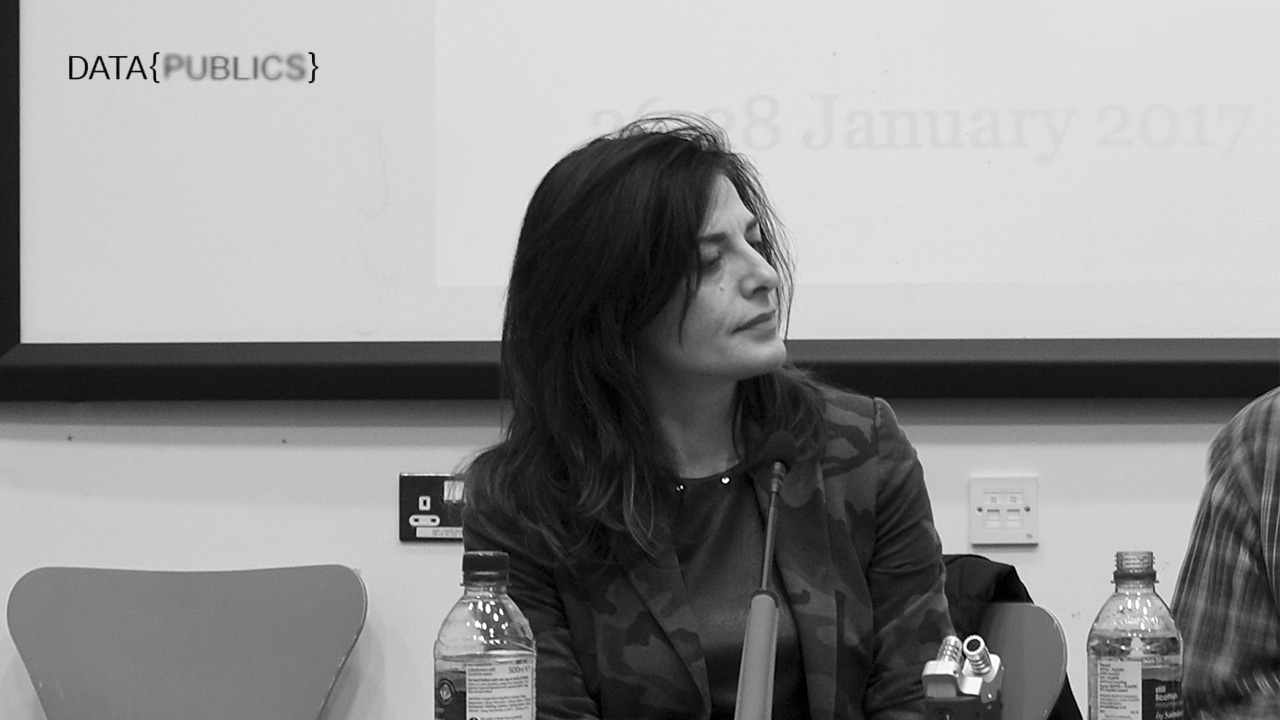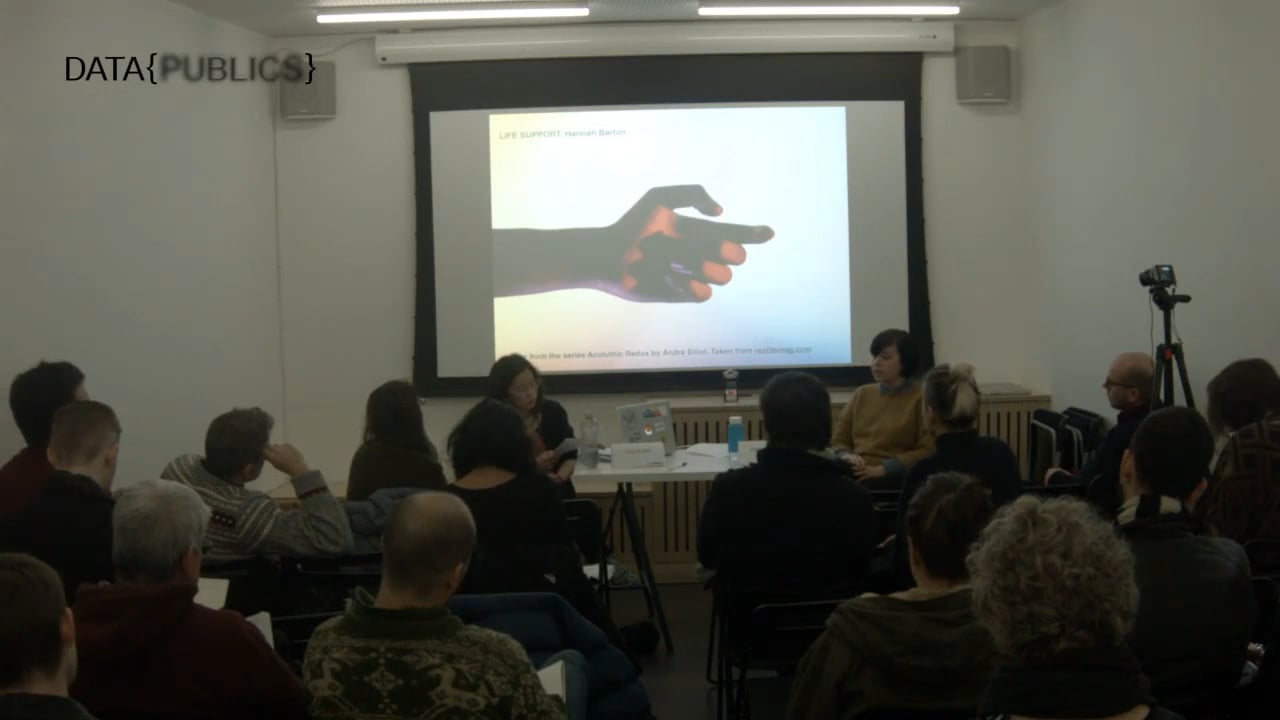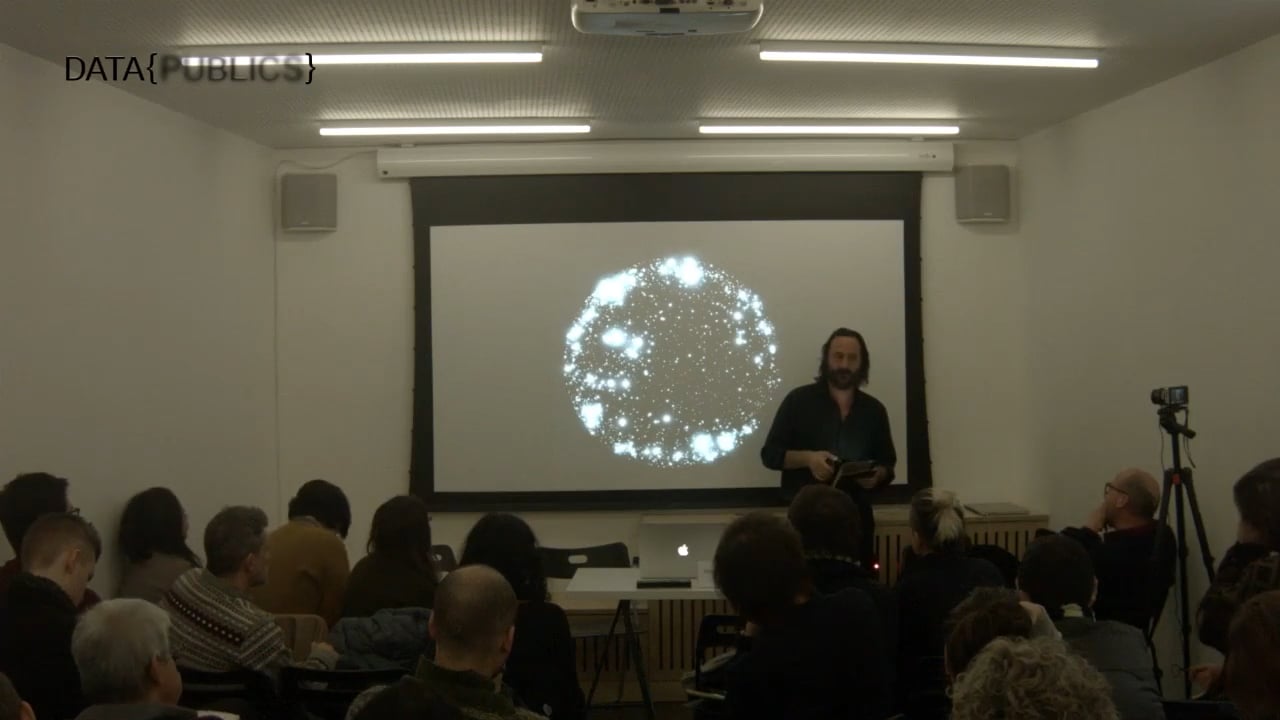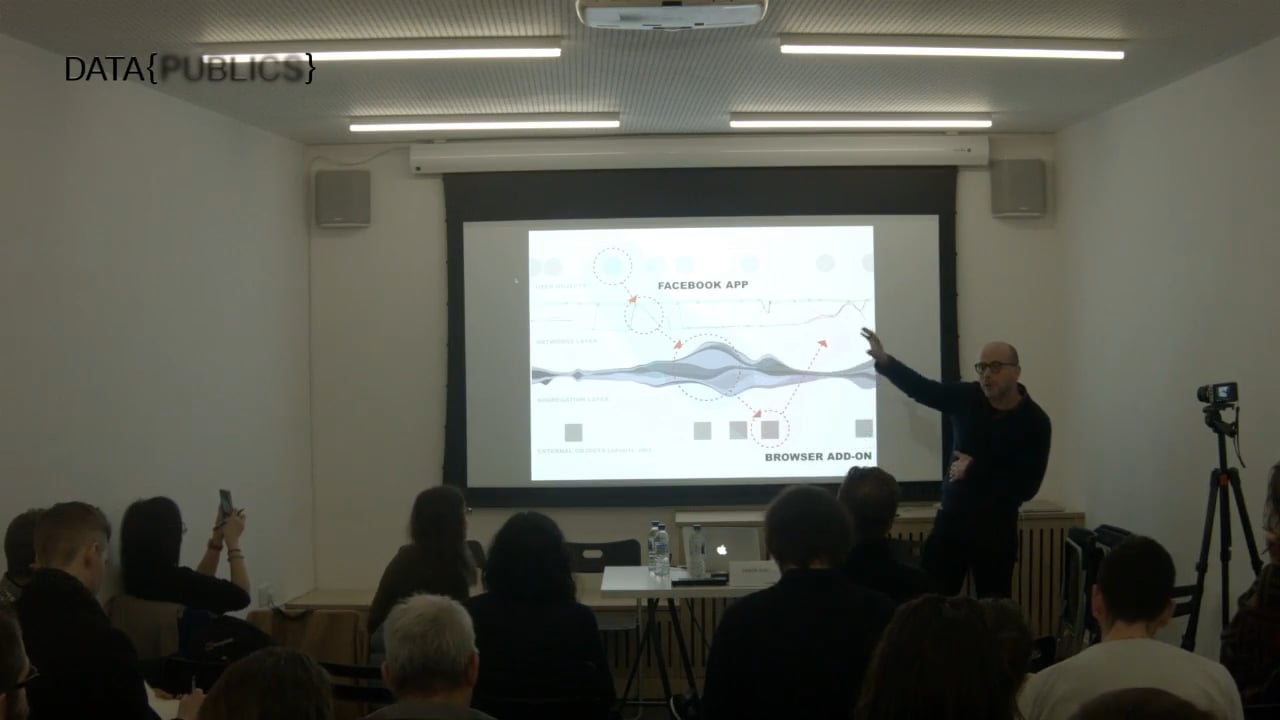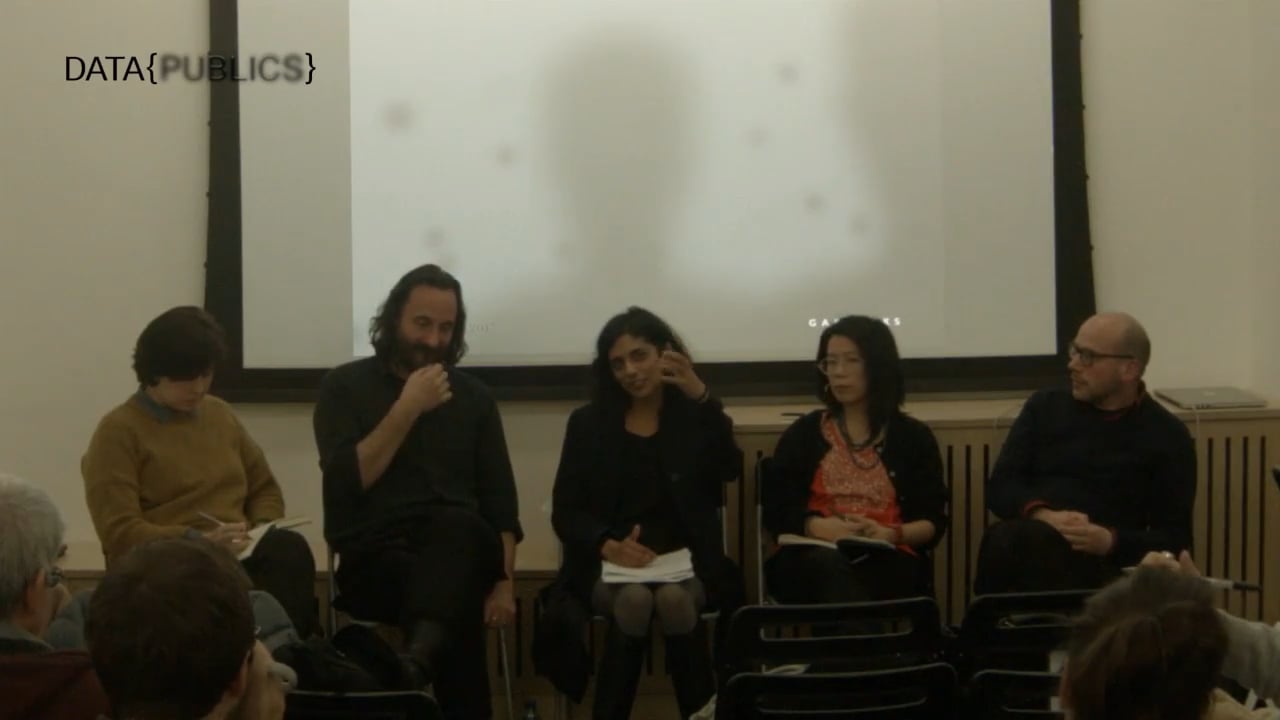All data lives within a frame of reference. Data is meaningless outside the system which encodes it. When we’ve worked with data it’s always been in the service of thinking about these underlying structures and systems rather than the data itself. In this talk we’ll mainly be talking about three projects: Untitled (superorganism), Black Shoals and Most Blue Skies - each of which, in their way, chronicle our changing ideas about the relationships between capitalism, nature and technology, and the ways in which we might respond to them.
Black Shoals (1999, 2015) is ostensibly a visualisation of the global financial system, in which the flows of global capital are represented by a planetarium in which every star represents a company traded on the world’s stock markets. Amongst the stars live a colony of artificial life creatures who feed on the movements of capital. The project was, in part, a reaction to the naturalisation of the system of global capitalism in which the market is increasingly perceived as a mysterious force of nature rather than an artefact of culture. Since the seventies the language of complexity theory has built a bridge between biological ecologies and financial systems that has served to reinforce the legitimacy and the “naturalness” of the market. The emergence of complex behaviour from dynamic systems has become the dominant touchstone of “nature”. Adam Smith’s Invisible Hand is now recognised as a feedback property of a self organising ecology, and this seems to position it as a comparably fundamental force. We used a similar feedback effect as part of the work we produced in response to the “Monument to the Anthropocene” exhibition; “Untitled (Superorganism)”. The project was a re-creation in the gallery of an “ant mill” - a phenomenon in which hundreds of thousands ofarmy ants lose their pheromone trail and begin to follow each other in an endlessly rotating circle until exhaustion and death.
Most Blue Skies is an attempt to come to some sort of peace with the very problematic idea of nature and its relationship to the technological and social systems in which we’re embedded. The project is a quixotic attempt to answer a simple childhood question - where is the bluest sky in the world? We approached the problem using the most advanced resources available to us, including satellite sensing, atmospheric modelling, real time sensor networks and radiative transfer models developed by NASA. There is an apparent paradox between the simple prelapsarian beauty of the blue sky and the disproportionate complexity of the technology we employ to try to answer the question.The work struggles to resolve this paradox in a synthesis which hopefully emerges as a more optimistic aesthetic for a data-saturated world.
Joshua Portway is a UK-born artist and computer programmer and Lise Autogena, a Danish-born artist and Professor of Cross-Disciplinary Art at the Cultural Communication and Computing Research Institute (C3RI) at Sheffield Hallam University. Based in London, they have worked together since the early 90’s using custom built technology and visualisations of global real-time data to develop large scale multimedia installations, site-specific works and performances, usually in collaboration with organisations, communities and experts across many specialised fields.
Recent projects include: Kuannersuit; Kvanefjeld, a film investigating the challenges of siting a uranium mine in Greenland, the difficult decisions and tradeoffs faced by a culture seeking to escape a colonial past and define its own identity in a globalised world (Bildmuseet, Sweden 2016), Cities like Plants, a robotic installation exploring how the regulatory systems underlying plant growth relate to principles of city planning (Cambridge University, 2016), Black Shoals; Dark Matter, a long term exploration into data visualisation and financial belief systems, visualising the financial markets as a planetarium, where stars representing companies on the world markets form constellations and galaxies depending on the movements on the markets. Live trading on the stars generate light, which provides food for an ecology of artificial life creatures that live and evolve amongst the stars (Somerset House, ArtScience Museum Singapore 2016, Nikolaj Kunsthal 2004, Tate Britain 2000). Untitled (superorganism) an installation simulating the phenomenon of the “ant mill”, a side effect of the self-organizing structure of certain ant colonies, where hundreds of thousands of ants can walk in a circle until overcome by exhaustion and, eventually, death (Abattoirs Museum 2014, ZKM 2015). Most Blue Skies, an enquiry into the changing psychological perceptions of the sky space. The project responds to real-time changes in the atmosphere using a complex system of satellite data acquisition and atmospheric simulations, in order to visualize and locate the currently ‘bluest sky’ in the world. (Domaine de Chamarande, 2012, Tensta Kunsthal, 2010, Nikolaj Kunsthal/COP15, 2009, Gwangju Biennial 2006) and Foghorn Requiem, a site-specific performance - a requiem for the lost sound of the foghorn, composed by Orlando Gough and performed by three brass bands, the Souter Lighthouse foghorn and fifty ships on the North Sea. Custom designed computer software and hardware dynamically compensates for time delays from horns being played on ships miles away from the listeners, allowing the timbral effects of distance and landscape to be directly incorporated into the music (Souter Lighthouse, North Sea, UK, 2013).
